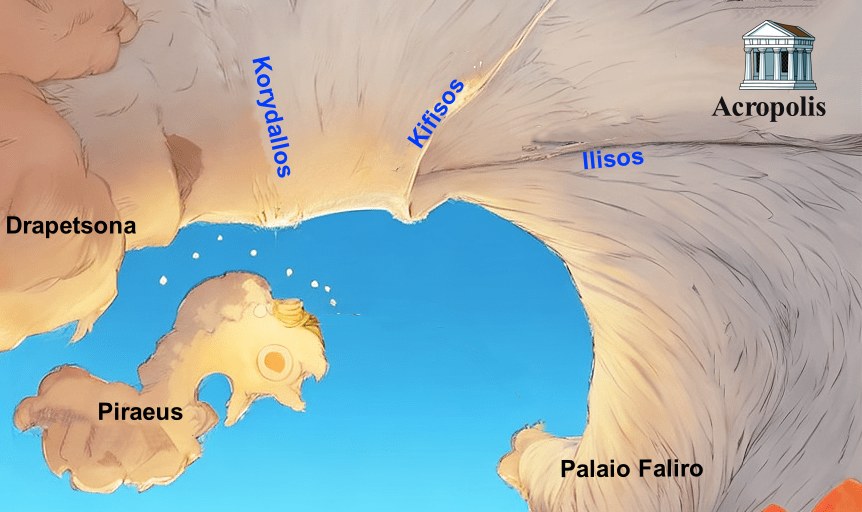
Largest port in Greece

Piraeus is the largest port in Greece and one of the largest ports in the Mediterranean. It is the center of shipping, as well as the industrial and transport hub of the country, which offers tourists excellent opportunities for recreation and transit to the islands. Piraeus also boasts of its modern hotels, cozy taverns and stylish cafés, where you can enjoy not only fine food and drinks, but also picturesque seascapes. The view of the ships that frequently call at the port of Piraeus adds a special charm and atmosphere to this wonderful place.
History
In prehistoric times, the main port of modern Greece, Piraeus, was an island just off the coast of Attica, similar to the present-day island of Salamis. This is probably why it got its name “Piraeus”, derived from the words “πορθμέας” (ferryman), “πέρασμα” (passage) which means “μεταφέρω απέναντι” (translating opposite). Porfméas was the very boatman who ferried people from one shore to the other. The sea bay started near the Paleo Faliro neighborhood and passed through the neighborhoods of Kallifea, Moschato, Rendi, Neo Faliro, Kaminia and ended at about where the train station is today. Over the centuries, the sea gulf between Piraeus and Attica gradually disappeared due to the embankments of the rivers Kifissos and Ilisos.

This created a shallow marsh and then turned into a muddy place called “αλίπεδο - alipedon”. Plutarch mentions that Kimon used many pebbles and massive stones to reinforce the foundations when building the Long Walls, especially in the area of Alipedos. There is no exact data on when Piraeus was an island today, but many agree that Piraeus was an island before 1500 BC. The first inhabitants of Piraeus were Pelasgus, Kares, Leleges, Cretans, Thracians, Phoenicians, but mostly Minyans were the most advanced and had the ability for amazing technical knowledge, which was rare for that time. The Minyans settled on a hill (known today as the hill of the prophet Elijah) near the bay of Munihia (today Microlimano). According to one version the hill was given to the Minyans by King Munichos of Athens, and therefore it was named in honor of King Munichia of Athens, while another version claims that it was the name of a leader or hero of the Minyans.

The Minyans specialized in the construction of underground passages (tunnels), sewers and other infrastructure, the remains of which are still found today in various places. Piraeus stands on the seashore, and this fact determines the whole style of its life. The city was built in the middle of the 5th century b.c. by the architect Hippodamus. The second design of the city in 1834 was also based on the drawings of Hippodamus. Themistocles was the first statesman who realized the importance of Piraeus for Athens and promoted it to become the main port and to replace the gulf of Faliro, which served as the port of Athens until the 5th century b.c.
In order to provide Athens with a fortified port, the Piraeus Wall was built between 493 and 479 b.c. Later, Pericles added to the defenses by building the Long Walls, which protected the road to Athens all along its length. In the Middle Ages, Piraeus was known as Porto Leone due to the huge stone lion guarding the entrance to the port. Today, Piraeus has preserved its rich history and is not only the most important port in Greece, but also a cultural center with many attractions. Narrow streets, ancient buildings and modern structures, where the past meets the present. Immersing yourself in history, you can imagine how in ancient times, boatmen transported people across the sea bay that once existed here.

To leave your comment please log in or register.
Related publications
You may also be interested in similar information




